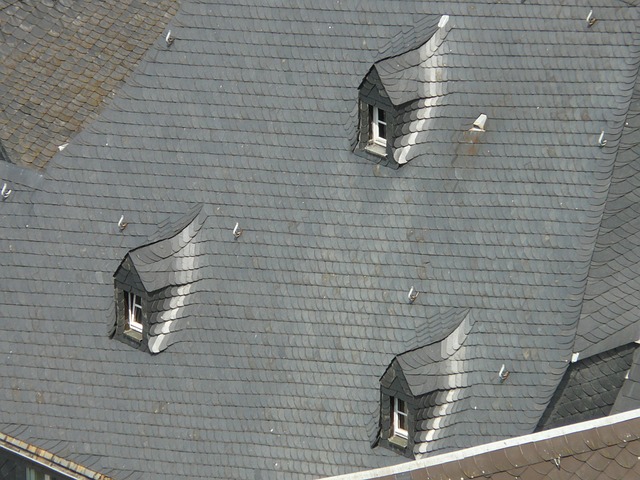Eco-friendly prefab roofs are gaining traction as a sustainable solution, integrating solar panels, green roofing systems, and reflective materials for enhanced energy efficiency and insulation. These innovative designs reduce environmental impact by utilizing recycled materials like bamboo, hemp, and metal, aligning with circular economy principles. The market offers diverse options, including living roofs and cool roofs with reflective coatings, that not only minimize waste but also elevate the aesthetic appeal of green homes. Successful projects demonstrate the benefits of eco-prefab roofing solutions, combining environmental responsibility with financial viability.
“Discover the future of sustainable living with eco-friendly prefab options, a growing trend that’s revolutionizing the construction industry. This comprehensive guide explores how green building practices and innovative materials are shaping prefabricated homes. From the environmental benefits of sustainable materials to cutting-edge eco-friendly roof designs, we delve into the trends redefining modern homebuilding. Learn about successful implementations, understand the positive impact on the environment, and explore the longevity these homes offer.”
Understanding Eco-Friendly Prefab Structures: A Growing Trend
Eco-friendly prefab structures are gaining traction as a sustainable alternative to traditional building methods. This growing trend is driven by the need for more environmentally conscious living spaces, especially with the rise of green building initiatives globally. Prefab construction offers a unique blend of efficiency and sustainability, making it an attractive option for both residential and commercial projects.
These structures utilize eco-friendly materials, such as recycled steel, bamboo, and natural insulators, to create durable and energy-efficient homes. One notable aspect is the focus on eco-friendly prefab roofs, which play a crucial role in overall sustainability. By incorporating solar panels, green roofing systems, and reflective materials, these roofs contribute to reduced energy consumption, improved insulation, and even food production, making them a key component in the quest for greener buildings.
The Role of Sustainable Materials in Prefab Construction
In the pursuit of sustainable building practices, eco-friendly prefab options using sustainable materials are gaining significant traction. One notable aspect is the crucial role played by eco-friendly prefab roofs. These innovative solutions not only reduce construction waste but also minimize the environmental impact throughout the lifecycle of the structure. By incorporating recycled and renewable materials like bamboo, hemp, and recycled metal into prefab panels, manufacturers can create robust and aesthetically pleasing rooftops that blend functionality with ecological responsibility.
The use of sustainable materials in prefab construction extends beyond roofs. From walls to floors, these materials offer a range of benefits including improved insulation, reduced carbon footprint, and better air quality indoors. Moreover, many eco-friendly prefab homes are designed for easy deconstruction and recycling at the end of their useful life, further promoting circular economy principles. This holistic approach not only conserves natural resources but also fosters a more sustainable future for generations to come.
Exploring Eco-Friendly Roof Options: Designs and Innovations
In the realm of eco-friendly prefab construction, the roof is no longer merely a protective barrier but an opportunity to enhance sustainability. Today’s market offers a vibrant tapestry of innovative designs and materials for those seeking green options. From living roofs that support plant growth to solar panels seamlessly integrated into roofing systems, these advanced features not only reduce environmental impact but also add aesthetic value.
Beyond traditional options, architects and builders are experimenting with recycled and biodegradable materials like bamboo, hemp, and mushroom mycelium for roof decking. These sustainable alternatives offer excellent insulation properties while minimizing waste. Additionally, cool roofs—coated with reflective materials—help regulate indoor temperatures, reducing the need for energy-intensive air conditioning. As the push for eco-friendly prefab homes continues to grow, so does the diversity of roofing options, ensuring that sustainability and style can coexist harmoniously.
Benefits of Choosing Green: Environmental Impact and Longevity
Choosing eco-friendly prefab options with sustainable materials isn’t just a trend, it’s a crucial step towards mitigating the environmental impact of construction. By opting for green practices, we reduce the carbon footprint associated with traditional building methods. Eco-friendly prefab roofs, for instance, are designed to be efficient and durable, minimizing waste and energy consumption throughout their lifecycle.
These roofs often incorporate renewable materials like recycled metal, bamboo, or reclaimed wood, contributing to a more sustainable landscape. Moreover, they can significantly extend the lifespan of buildings. Longevity means less frequent replacements, reducing the demand for new material production and further lowering environmental strain.
Case Studies: Successful Implementation of Eco-Prefab Homes
The success stories of eco-friendly prefab homes are abundant, offering tangible proof that sustainable construction can be both aesthetically pleasing and highly functional. One notable case study highlights a residential project in which a community of modern, energy-efficient homes was built using primarily recycled materials. These homes, featuring innovative eco-prefab roofs, seamlessly integrated solar panels and green insulation, showcasing the potential for dramatic energy savings. The use of prefabrication techniques not only accelerated construction but also minimized site waste, demonstrating that eco-friendly building practices can be both swift and environmentally responsible.
Another successful implementation involved a commercial space conversion, transforming an old warehouse into a vibrant office complex with eco-prefab roofing solutions. By utilizing natural ventilation and daylighting strategies, coupled with a sophisticated rainwater harvesting system, the project achieved remarkable water and energy efficiency. The end result was not only a stunning architectural feat but also a testament to the financial viability of green building practices, as lower operational costs outweighed the initial investment within a reasonable timeframe.
The shift towards sustainable living extends beyond traditional construction methods, making eco-friendly prefab options increasingly popular. By utilizing sustainable materials and innovative designs, such as advanced eco-prefab roofs, these structures offer a compelling blend of environmental responsibility and modern aesthetics. The benefits are clear: reduced carbon footprints, minimal waste, and long-lasting homes that contribute to a greener future. With successful case studies showcasing their viability, eco-friendly prefab options using sustainable materials represent a promising path for the construction industry, fostering both environmental conservation and comfortable living spaces.
